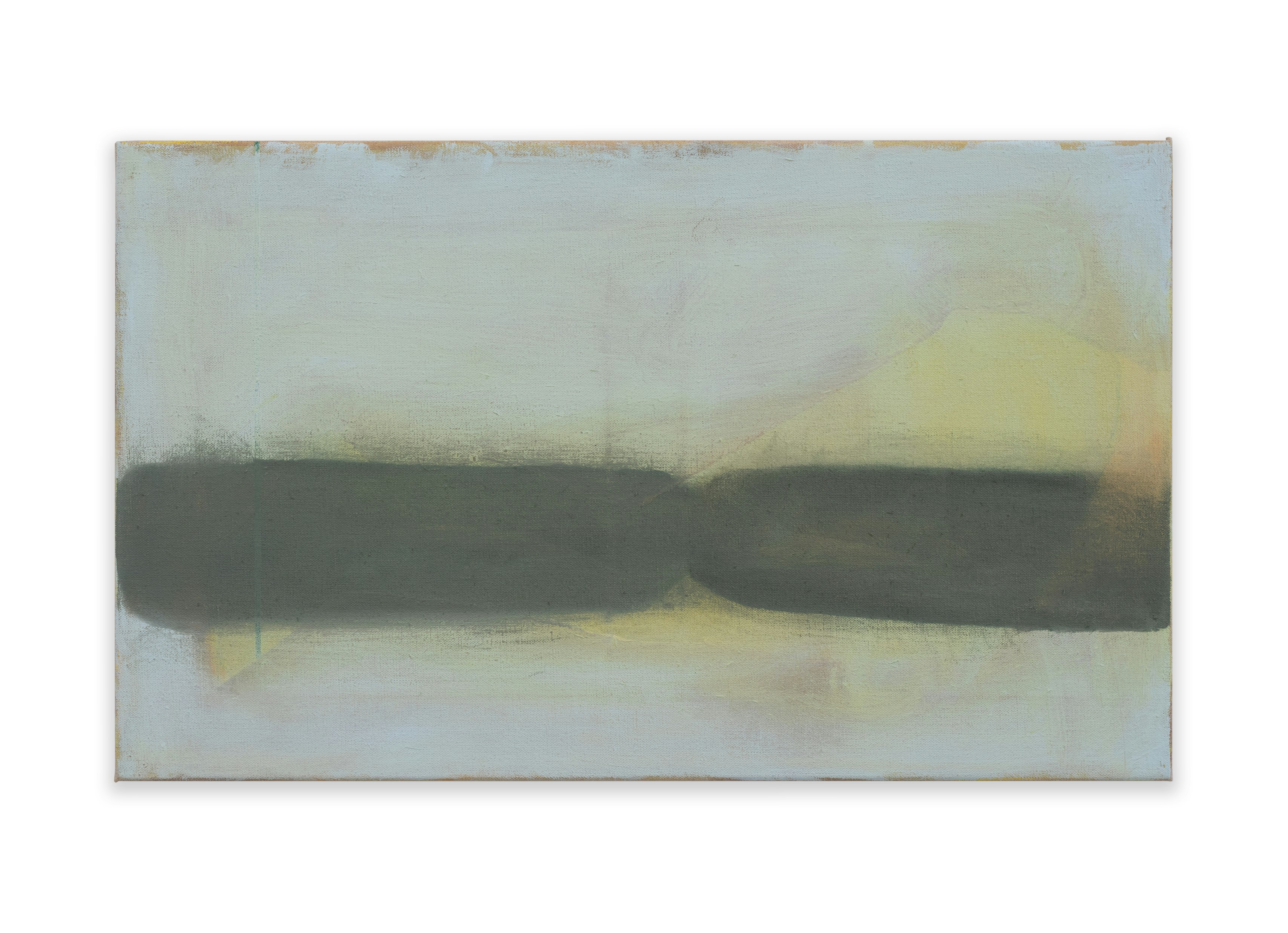
Growth, 2021, oil paint on linen, 33 x 55 cm
One of the premises of abstract painting is a productive anxiety — not necessarily a phobia — over the image. Often it posits in its place the residue of an encounter with the material. With his painting Growth (2022), Patrick Michael Fitzgerald epitomizes this dialectic of picture versus souvenir. Wassily Kandinsky, Hilma Af Klint, and Arthur Dove gave us the former; Piet Mondrian, Joan Mitchell, and Jack Whitten the latter, but none of them purely, and it is purism that Fitzgerald generously denies. We can describe what seems to be going on in Growth, but as we spiral ever deeper into its apparent pictorial elements, the chasm between the schematic and the actual, between the form and the way it is painted, or the fact that it is painted, grows ever wider. In his 1977 essay on Marcel Duchamp’s painting The Passage from Virgin to Bride (1912), Jonathan Crary interpolates, or at least invites the spectator into a participatory relationship with its alternately solid and dissolving surface, not to decipher its secrets, but to live its ambiguities.1 Certainly the implication was not lost on Crary that this reading authorizes a post-Duchampian paradigm for painting, according to which it need not fight for its legitimacy against either the abandonment of the aesthetic for which the readymade seems to call, or the formal-historical exhaustion upon which minimalism was built. Ironically, Crary’s escape valve was not Duchamp’s invention, but is the province of every painter in touch with her or his craft. Fitzgerald’s touch is both deadpan and authoritative, complicating the discourse of “de-skilling,” which relies on a one-dimensional concept of skill. At least since Manet, painters have revised the relationship between the physical trace and the criteria for success. In any case it is nonsensical to speak of the layered ghosts in Fitzgerald’s painting, for all their blunt incompleteness, as lacking skill.
A certain iconicity is widely visible across abstract painting today, as idiosyncratic shapes exchange corporeality with not entirely flat space. Travis Jeppesen has shown that generalizations endanger serious criticism, because they efface the impact and implications of artists’ moves by imposing hastily drawn categories.2 It may seem strange to fixate on the proportions of Growth, but the extended breadth of its rectangle, more than a little cinematic, distinguishes it from the proliferation of abstract emblems and invokes instead a broader history through its humid and chilly atmosphere. With his layers of paint, Fitzgerald scrupulously muddles, or better marries the illusionistic with the concrete. The two mysterious yet undeniably present things (although they might be, after all, holes) and a rising geometric figure that indelibly recalls the mountains of Hokusai and Cézanne, among other details, together call up the historical genealogies of European landscape painting, perhaps the tonalities of Corot, as well as the late twentieth century’s unbending materialist ethos. As applied to painting, this ethos is paradoxical, since the logic of minimalism grew out of the apparent fulfilment of modernist painting’s self-realization and subsequent expansion into a space of encounter whose conditions could be questioned from any angle. To maintain painting, one had to put in place a willful limit on art’s endless conquest. In this way, painters such as Fitzgerald do more than preserve or maintain history; they act decisively upon it.
1 Jonathan Crary, “Marcel Duchamp’s Passage from Virgin to Bride,” Tricks of the Light: Essays on Art and Spectacle (New York: Zone Books, 2023), 23-33.
2 Travis Jeppesen, “Zombie Criticism,” Bad Writing (London: Sternberg Press, 2019), 29-31.
© Vittorio Colaizzi, May, 2024.